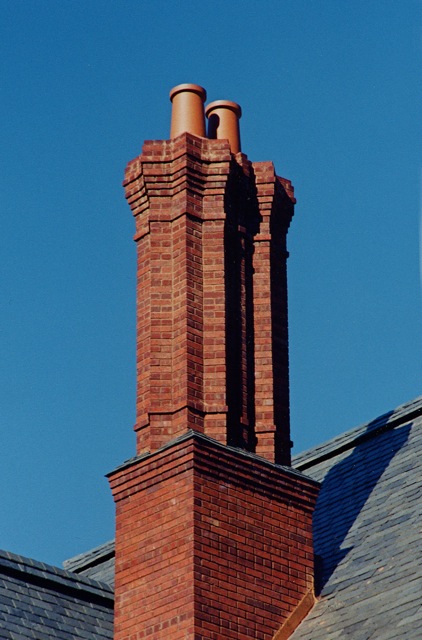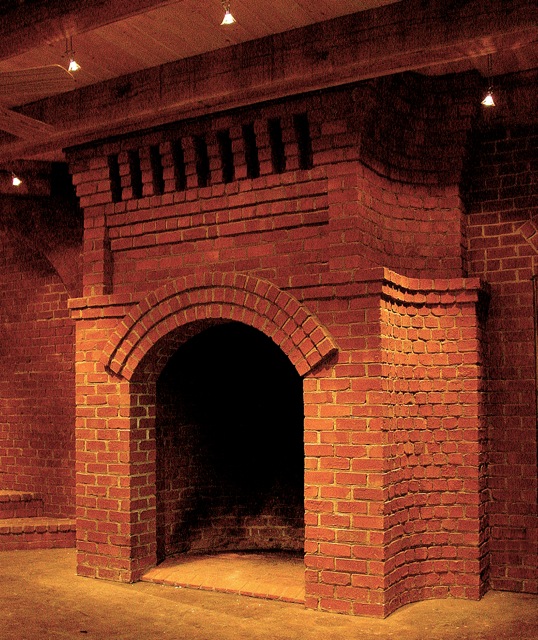In Defense of Masonry Fireplaces
by Clay Chapman, Period Architecture
9/16/10
|
From: Christian Chapman Date: September 13, 2010 11:59:16 AM EDT To: Power.Lucinda@epamail.epa.gov Subject: Clay Chapman/Fireplace Emissions For the sake of discussion I will identify the 3 different types of fireplace most commonly associated with the term "fireplace": 1. Pre-manufactured fireplace insert: Made of steel, sheet metal and ceramic, this light weight, inexpensive, production oriented, fireplace is by far the most common in building today. It arrives on site as a single boxed unit and does not require masonry. 2. Pre-manufactured fireplace kit: Isokern made by Earthcore is a good example of this fireplace type. The sturdy kit is assembled on site and is generally augmented by applied masonry though not necessarily. Utilizes cast iron dampers. 3. Masonry fireplace: Refers to the traditional fireplace type that is built on site one brick or stone at a time; this is the least commonly built fireplace today. Because of the definitive parameter "on-site-built," the fireplace type introduced above as "1. pre-manufactured fireplace insert" is not pertinent to the discussion.
|
|
The question deals with the particulate emissions of on-site-built fireplaces and how these emissions might be tested, regulated and minimized.
|

|
Jobs created in the market place by fireplace production are not more important than the environment.
|

|
I am a professional mason, timber framer and designer. I personally build architecturally sensitive masonry fireplaces and chimneys and have only built 6 in the last 3 years.
|

|
Because I am always interested in new construction, I visit construction sites frequently, and have not seen another masonry fireplace being built in the Atlanta area in that time. The only thing I have seen, in terms of on-site-built fireplaces, is the pre-manufactured fireplace kit which is cost comparable to a true masonry fireplace, but does not require the same degree of skill and is generally faster to construct.
|

|
As an exercise, I think it would be an interesting challenge to try and find a masonry fireplace being built now or in the last year.
|

|
The only legitimate statistical indictors for on-site-built fireplaces would be damper sales because, whether wood burning or gas, each on-site-built fireplace is constructed with a single damper. The caveat to this damper figure is that while cast iron throat dampers represent the probable vast majority, chimney top tampers are also implemented.
|

|
It would Not be an impossible leap to determine the rough number of individual damper sales through damper dealers, both throat and chimney top types within the last year - but the real challenge would be determining what portion of those sales represents pre-manufactured fireplace kits and what portion represents masonry fireplaces. All this to say, based on reasonable observation, I believe masonry fireplace production to be fractional to that of pre-manufactured fireplace kits.
|

|
Economically this would make sense because laypeople are not able to differentiate between the two types of fireplaces and there is a cost advantage to the pre-manufactured fireplace kit because it is faster and less complicated to build.
|

|
If this is the case, the moderate amount of particulate produced by the few masonry fireplaces being constructed today does not justify the effort it would take to monitor them. In addition, this is a dying art - its very difficult to believe that the annual number of masonry fireplaces being built is remotely significant to the particulate issue at hand. As a kind of "endangered architectural species," I would ask you to take the masonry fireplace's continued existence very seriously.
|

|
The reality of the matter is revealed in how readily that metaphor resonates - it's obvious, that in our snap together, get it done yesterday, conventional construction mentality that the "artisan craftsman" is running on life support.
|

|
Masonry fireplace design is still incredibly important to the world of architecture and we should not do anything to discourage it.
|

|
Homogenizing such a critical element to the art of building would not be reasonable or healthy to our culture.
C. Clay Chapman/Period Architecture
"Let building incite wonder and celebrate possibility
|

Buckley Rumford Fireplaces
Copyright 1996 - 2010 Jim Buckley
All rights reserved.
webmaster
